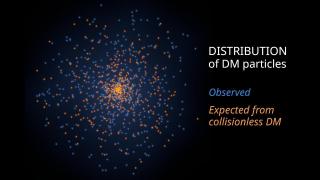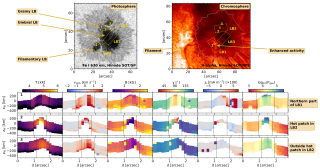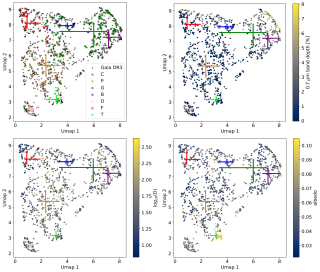Utilizando modelos semiempíricos de los espectros de fotoabsorción de varios fullerenos individuales (C_80, C_240, C_320 y C_540) predecimos transiciones en la región de la banda difusa más intensa del medio interestelar a 4430 A que podrían explicar su origen, hasta ahora desconocido. Estos modelos también presentan una alta densidad de transiciones en el ultravioleta que reproducen el denominado "bump" a 2175 A en la curva de extinción del medio interestelar (Iglesias-Groth 2004). Parece que los fullerenos podrían ser responsables de dos de los mayores rasgos de la absorción interestelar. Haciendo uso de las secciones eficaces teóricas y de los datos empíricos estimamos que la abundancia de fullerenos es de 0.05 moléculas por millón de átomos de hidrógeno en regiones del medio interestelar con índice de exceso de color E(B-V)~ 1.0.
Advertised on
It may interest you
-
 The existence of dark matter is probably one of the fundamental mysteries of modern science and unraveling its nature has become one of the primary goals of modern Physics. Despite representing 85% of all matter in the Universe, we do not know what it is. In its simplest description, it is made up of particles that interact with each other and with ordinary matter only through gravity. However, this description does not correspond to any physical model. Finding out what dark matter is requires finding evidence of some kind of interaction of dark matter that goes beyond gravity. In our workAdvertised on
The existence of dark matter is probably one of the fundamental mysteries of modern science and unraveling its nature has become one of the primary goals of modern Physics. Despite representing 85% of all matter in the Universe, we do not know what it is. In its simplest description, it is made up of particles that interact with each other and with ordinary matter only through gravity. However, this description does not correspond to any physical model. Finding out what dark matter is requires finding evidence of some kind of interaction of dark matter that goes beyond gravity. In our workAdvertised on -
 Light bridges are elongated and bright structures protruding into the umbra of sunspots. The presence of light bridges has a significant role in the evolution of sunspots and the heating of their overlying atmosphere. Therefore, investigating these structures is crucial to understanding fundamental aspects of sunspots. By applying a novel code based on deep-learning algorithms called SICON to spectropolarimetric observations acquired with the Hinode satellite, we computed atmospheric parameters that allowed us to infer the variation of the physical properties of light bridges on a geometricAdvertised on
Light bridges are elongated and bright structures protruding into the umbra of sunspots. The presence of light bridges has a significant role in the evolution of sunspots and the heating of their overlying atmosphere. Therefore, investigating these structures is crucial to understanding fundamental aspects of sunspots. By applying a novel code based on deep-learning algorithms called SICON to spectropolarimetric observations acquired with the Hinode satellite, we computed atmospheric parameters that allowed us to infer the variation of the physical properties of light bridges on a geometricAdvertised on -
 Asteroids are the remnants of the planetary formation in the Solar System and so, their study helps us to understand the conditions during the early stages of the formation of our planetary system. Among asteroids, those classified as primitives present similar spectra to that of carbonaceous chondrites, i.e., they are rich in carbon and organic compounds and silicates altered by the presence of liquid water (phyllosilicates). Primitive asteroids are well characterized in various wavelength regions, showing their most diagnostic feature at 3μm. However, there is a lack of information in theAdvertised on
Asteroids are the remnants of the planetary formation in the Solar System and so, their study helps us to understand the conditions during the early stages of the formation of our planetary system. Among asteroids, those classified as primitives present similar spectra to that of carbonaceous chondrites, i.e., they are rich in carbon and organic compounds and silicates altered by the presence of liquid water (phyllosilicates). Primitive asteroids are well characterized in various wavelength regions, showing their most diagnostic feature at 3μm. However, there is a lack of information in theAdvertised on